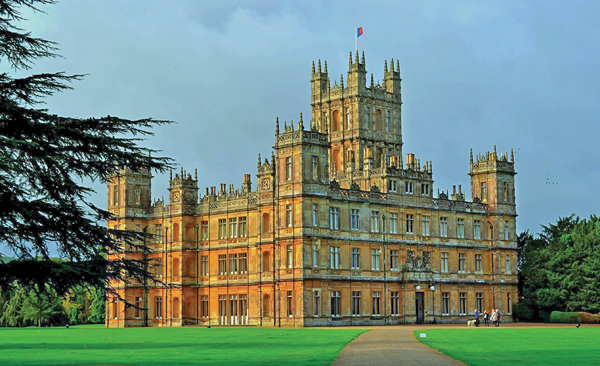The gardens at Highclere Castle you don’t see on TV Downton Greenery


Highclere Castle, the stand-in for the fi ctional “Downton Abbey” TV series, is about 65 miles southwest of London.
By Hugh G. EARNHART
OSU Ext. master gardener volunteer
If you think the sun has gone down on the British Empire, think again. Each week millions in more than 200 countries watch a soap opera called Downton Abbey, shown here on PBS.
The background for Downton Abbey is Highclere Castle, located 65 miles southwest of London, in the charming countryside of Hampshire County.
The 5,000-acre estate, which includes the 1,000-acre parkland or backyard and the castle, was built in l842.
The estate has been in the family since 1679 and is currently owned by the Eighth Earl and Countess of Carnavon. No, they did not move out of the stately home; the owners just leased a small portion of the grounds for filming.
Most of the outdoor scenes are filmed on the property, but in a restricted area. What viewers see on the television screen are the grounds that surround the front of the castle and are dominated by large Lebanon cedar trees, some 250 years in age.
But there is more to Highclere than what viewers see on television. There are the backyards, designed in 1774 by Lancelot Brown, the guru of garden designing at that time. There are three gardens lush with perennials and annual flowers, shrubs, fruit trees, native trees and greenhouses.
The Monk’s Garden acquires its name in honor of the Bishop of Winchester, who lived on the estate some 800 years ago. It is a Victorian-style garden that has been cultivated since the 13th Century.
The massive yew topiary dominates the garden, which contains a lavender hedge along an 18th Century Georgian wall.
Also in the garden area are snapdragons, penstemons and agapanthus.
The estate does not grow vegetables, but does have many peach and nectarine trees growing in the various greenhouses. Outside, you might find peach, quince and medlars (crabapple) trees producing fruit in season.
A favorite of the Carnavon family is the tea roses that grow in the greenhouses. The Monk’s Garden is loaded with roses of various varieties.
Next to it is the White Border Garden, overpowered by mop-head hydrangeas surrounded by gladiolus, peonies, roses and other exotic perennials.
The Secret Garden, protected by an iron gate and encompassed by herbaceous borders, releases its mystery in color during July and August with Russian sage, poppies, alliums, nicotiana and delphiniums.
There is constant change in the Wood of Goodwill, a 10-acre plot garden featuring native plants and trees. Some 15,000 flowering bulbs announce the arrival of spring each year.
Visitors can tour the gardens on special days of the year, walk the footpaths and enjoy a horticultural panoramic view that is ancient and splendid.
 43
43
